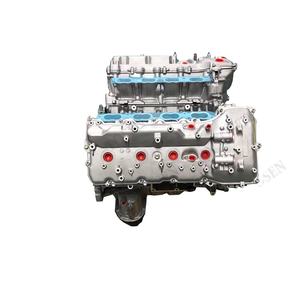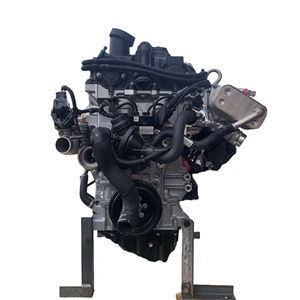Where to Find the most effective Opel Corsa Engine for Replacement
Where to Find the most effective Opel Corsa Engine for Replacement
Blog Article
Discovering the Inner Operation of a Compact Automobile's Engine System
As drivers, we often consider approved the intricate processes that take place within the boundaries of our car's engine system. The portable yet complex equipment that moves us onward is a wonder of design precision and control. From the controlled explosions in the burning chamber to the precise timing of fuel injection, every component plays a critical role in the smooth procedure of the engine. In this exploration of a portable car's engine system, we will decipher the internal functions of this mechanical symphony, losing light on the mysteries that drive us ahead on our everyday journeys.
Combustion Refine Summary
The burning process in a portable lorry's engine system is an important system that successfully converts gas right into power to power the automobile. This procedure happens within the combustion chamber of the engine, where fuel and air mix, fire up, and create controlled explosions. The burning procedure includes four main phases: consumption, compression, power, and exhaust.
During the consumption stage, the piston moves downward, drawing in a combination of air and fuel into the combustion chamber. This down movement produces the power required to drive the vehicle. This cyclic combustion process is fundamental to the operation of a portable vehicle's engine system, guaranteeing effective power conversion for propulsion.
Piston and Cylinder Communication

The piston's specific fit within the cyndrical tube is important for preserving ideal compression and preventing power loss throughout combustion. Tight clearances between the piston and cyndrical tube wall surfaces guarantee effective securing, allowing the piston to relocate efficiently without permitting gases to leak past. Proper lubrication is also crucial to lower rubbing and use between these elements, boosting longevity and performance.
In addition, the design and products made use of in manufacturing the piston and cylinder impact engine performance and resilience. Modern engines frequently employ light-weight yet sturdy materials like aluminum alloys for pistons and cyndrical tube linings to decrease inertia and enhance check my site thermal efficiency. On the whole, the unified interaction in between the piston and cylinder is fundamental to the engine's capability and general performance.
Gas Injection System Functionality
Gas injection systems in portable car engines play a vital role in specifically providing gas to the combustion chamber for controlled and effective ignition. The fuel shot system functions by injecting gas right into the combustion chamber at the optimum moment during the engine's operation (opel corsa engine). This exact timing guarantees that the gas mixes equally with the air for proper burning, leading to boosted fuel effectiveness and lowered discharges
There are primarily two kinds of fuel shot systems made use of in small lorry engines: port fuel shot (PFI) and direct fuel shot (DFI) PFI systems infuse fuel right into the consumption port before the intake shutoff, while DFI systems inject fuel straight right into the combustion chamber. Both systems have their benefits, with DFI supplying much better gas atomization and PFI providing a much more cost-effective option.
Understanding Engine Cooling Systems
Effective operation of a portable automobile's engine depends heavily on the performance of its cooling devices. The cooling system in a compact automobile commonly is composed of numerous elements working with each go other to control the engine temperature. Recognizing these engine cooling systems is crucial for maintaining the efficiency and long life of a portable automobile's engine system.

Exhaust System Parts Explained
The optimal performance of a compact car's engine cooling mechanisms relies on a complementary system referred to as the exhaust system, which comprises different vital components for ensuring effective exhausts and engine performance. The exhaust system includes components such as the exhaust manifold, catalytic converter, muffler, and tailpipe. The exhaust manifold gathers exhaust gases from the engine's cylinders and courses them to the catalytic converter. The catalytic converter after that converts harmful toxins in the exhaust into less unsafe discharges prior to releasing them via the muffler and tailpipe.
One important part of the exhaust system is the oxygen sensor, which keeps an eye on the oxygen degrees in the exhaust gases to aid control gas usage and make sure optimal next engine performance. opel corsa engine. In addition, the resonator may exist in some exhaust systems to lower noise degrees. Generally, the exhaust system plays an important function in keeping engine efficiency, decreasing harmful exhausts, and making sure a quieter driving experience for portable automobile proprietors

Conclusion
To conclude, the compact automobile's engine system is a complex mix of elements that work with each other to promote the burning process, transform fuel into energy, and expel waste gases. Understanding the inner workings of the engine system, consisting of the piston and cylinder interaction, fuel shot system, engine cooling devices, and exhaust system elements, is important for maintaining optimum efficiency and efficiency of the lorry.
The combustion procedure in a compact vehicle's engine system is an essential mechanism that effectively transforms gas right into power to power the vehicle.Fuel shot systems in compact lorry engines play an important function in specifically supplying gas to the combustion chamber for reliable and controlled ignition.There are primarily two types of gas shot systems utilized in compact lorry engines: port gas shot (PFI) and straight gas injection (DFI) Understanding these engine cooling mechanisms is important for maintaining the performance and long life of a portable automobile's engine system.
The ideal functioning of a compact vehicle's engine cooling mechanisms depends on a complementary system known as the exhaust system, which comprises numerous essential components for guaranteeing efficient exhausts and engine efficiency.
Report this page